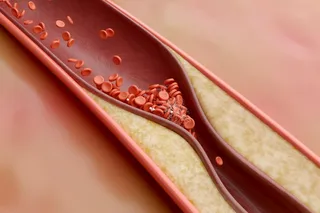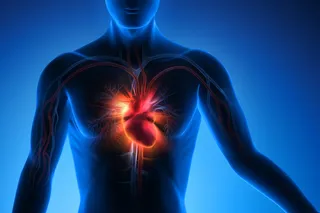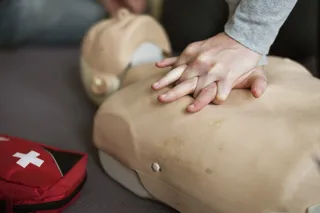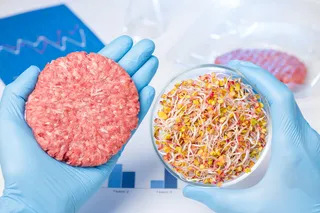The patient’s first question for me was, “Will I be able to go to football practice this Saturday?”
“Well, how about if I take a look at you first, OK? What’s been going on?” I’d just seen this teenager for a sports physical a couple of months before, and I remembered how excited he was to be joining the football team for the first time. Now he sat on the table, looking somewhat peaked, as my grandmother would have said. The nurse’s note for the visit read, “Fever and abdominal pain for two days.” His temperature was 101.5 degrees Fahrenheit.
“It’s been hurting here since yesterday,” he said with a vague wave toward his abdomen, “and my mom says I have a fever.”
The abdomen has always been a source of great mystery. It doesn’t offer a lot of clues when something is wrong: Whether the problem is simple indigestion or a potentially life-threatening catastrophe, all the belly seems to know is how to hurt. Even the etymology of the word abdomen is mysterious. It may derive from a Sanskrit root, dhe, meaning “to put or place,” and the Latin prefix ab, meaning “away”—thus, something put away or hidden. Books have been written for medical students and physicians on how to diagnose abdominal pain, and we had hours of lectures on the subject in medical school and residency. More than a dozen different organs lie within the abdomen, and dozens of things can go wrong with any one of them. I tried to keep all those lessons in mind as I began questioning the teenager.
“Show me exactly where it hurts,” I said, watching his face carefully for signs of illness or discomfort. The fact that he was 15 years old, and not 15 months or 15 days, made my job a bit easier. Babies can’t tell me where their pain is, but a young man can. “It’s right here,” he said, pointing to an area on the left side of his abdomen, just below the ribs.
One important clue is geography: Is the pain in the upper right, the lower left, or around the belly button? Every location generates its own list of possibilities, each with its characteristic history and physical findings. Most people are aware, for example, that pain in the lower right abdomen could mean appendicitis. What they may not know is that there is one precise spot on the abdomen, McBurney’s point, that is typically extremely painful in acute appendicitis. If I push on that spot and the patient yells or winces, he’s on his way to the surgeon.
When the youth pointed to the upper left quadrant, I was somewhat concerned because that is not a common location for pain from appendicitis. If the patient had been running and then developed a brief sharp pain there, and if everything else was OK, I could reassure him that he probably had a stitch (a brief muscular cramp) or maybe a gas pain in the upper parts of the colon. But this pain had lasted more than a day and was associated with fever. Something else was going on.
I reviewed the anatomy. The spleen and part of the colon are in the upper left quadrant. Farther back, behind the peritoneum (the membrane that surrounds the abdominal cavity like a thin glistening sac) are the left kidney and adrenal gland and the tail of the pancreas. I asked more questions. My patient had a cold a few days ago and was still coughing a little, but he wasn’t having any difficulty breathing. He hadn’t been vomiting, he had no constipation or diarrhea, and he hadn’t had anything unusual to eat or drink in the past few days. He was generally healthy and in good shape, just as he was when I did his football physical earlier.
He did appear mildly uncomfortable. He had a slight runny nose, but his throat and ears were fine, his heart was normal, and his lungs sounded clear. He said he felt some pain when I pushed on his abdomen in the left upper quadrant, but his spleen was not enlarged, and his bowel sounds were normal.
I was puzzled. I called his mother into the room and told them that I wanted him to see the general surgeon down the hall. A half hour later, the surgeon ducked his head in my door. “I think your young guy may have an injury to his spleen,” he said. “He told me that he got hit on the left side in football practice the day before yesterday. He could have a small laceration that’s leaking blood. I’m going to send him for a CT scan.”
“Thanks, Chuck.” I felt a bit chastened because I hadn’t asked about any history of trauma to the area. Surgeons are attuned to that, of course, but I should have considered that possibility. It was a reminder that every patient is an opportunity to learn—and to relearn. This young man proved no exception.
After my last patient, I called the hospital and found that the teenager was just about to have his CT scan. I drove to the hospital and went up to the radiology department.
“Here’s the scan, Mark,” said the radiologist. “His spleen is OK . . . but did you know he has pneumonia?” I stared at the image. The fluid in the left lower lobe of the patient’s lung stood out in stark white contrast to the normal black, air-filled lung tissue around it.
“I sure didn’t,” I replied. “His lungs sounded clear, and he wasn’t coughing much at all.”
“Hmmm,” he said. “You’re someone who can usually pick up a pneumonia when there’s hardly anything for us to see. I guess even you can be fooled.” I grinned uncomfortably at the compliment. I was remembering an important lesson from those lectures and books on abdominal pain.
Just as the workshops on corporate success exhort people to “think outside the box,” my teachers had always reminded us to “think outside the belly” when dealing with abdominal pain. Your abdomen can hurt when you have strep throat, an infected hip, or pneumonia. The lower lobe of each lung sits directly on top of the diaphragm. This broad dome-shaped muscle is both the bottom of the chest cavity and the top of the abdominal cavity, so the peritoneal membrane that encloses the abdomen also lines the underside of the diaphragm. The young athlete’s infection was close enough to the lower surface of his left lung to cause local inflammation of the diaphragm and the peritoneum, thus causing belly pain.
When I listened to the patient’s chest again, I could hear, very faintly, the crackles over his left lower lung field that signal pneumonia. Those crackling sounds result from a buildup of fluid. When microorganisms spread deep into the lungs, they reach the alveoli, the tiny air-filled sacs where oxygen is absorbed into the capillaries of the lung. Part of the immune reaction to the infection is the secretion of fluid around the infected area. But if the infection gets out of hand and spreads to large portions of the lung, the fluid buildup starves the blood of oxygen.
I admitted the young man to the hospital and started him on IV antibiotics to clear what was probably a streptococcal infection in his lungs. By the next day, he was feeling much better with no more abdominal pain, and I sent him home. He missed that Saturday’s football practice, but when I saw him a week later, he appeared perfectly fine. His lungs were clear, his belly was pain free, and I OK’d his return to practice.
The ancients were correct: The abdomen is a place of mystery, of things hidden away. And sometimes the things hidden are not what we suspect.
Mark Cohen, a pediatrician in Honolulu, is a frequent contributor to Vital Signs. The cases described in Vital Signs are true stories, but the authors have changed some details about the patients to protect their privacy.














